3R Waste
Activity (Experimental)
※Kumamoto University provides support for waste management related to experiments as a part of chemical substance management. However, for the sake of clarity, it is summarized under "3Rs and Waste".
Collection of experiment waste liquids
The collection flow of experiment waste liquids
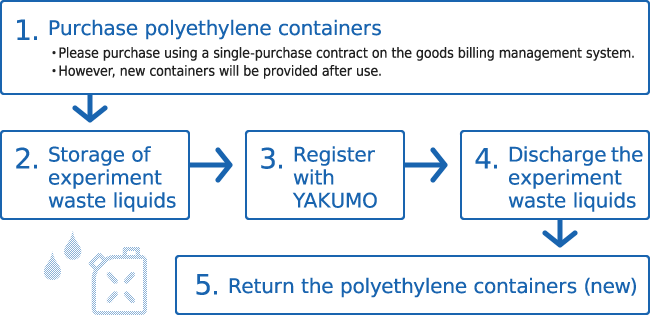
Costs for experiment waste liquid disposal
The Environmental Safety Center will bear the cost.
However, if the amount exceeds the budget, it will be charged to the
beneficiaries.
Frequency of experiment waste liquids collection
Collected monthly.
See the Environmental Safety Center
calendar.
Definition of experiment waste liquids
- Cleaning Manual(PDF)
Items such as laboratory liquid waste resulting from educational activities, research, etc., containing chemical substances and liquids used to rinse containers containing laboratory liquid waste are to be treated as experimental liquid waste.

※ If solids are mixed in the experiment waste liquids when it is stored, they
must be filtered out before the liquids are discharged.
※ When discharging experiment waste liquids, check the pH using test paper.
※ When storing the experimental liquid waste, use white two-lipped 10 L or 20 L
polyethylene containers for each type.
Does it contain hazardous substances?
Hazardoussubstances are defined as:
・ Substances that may not be discharged into sewers as listed in the MSDS
"Precautions in disposal".
・ Those subject to laws and regulations on chemical substances (refer to the
designated laws and regulations regarding chemical substances management).
・ Those substances whose harmfulness or danger levels cannot be determined.
・ Substances with pH values or ≤5, or ≥9.
"MSDS" stands for "Material Safety Data Sheet".
Method for storing experiment waste liquids
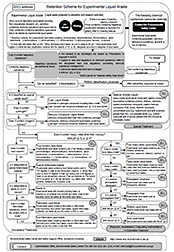 Experiment waste liquids are classified
into different storage categories according to the degree of toxicity and
treatment method.
Experiment waste liquids are classified
into different storage categories according to the degree of toxicity and
treatment method.
Note: Experiment waste liquids containing PCBs, dioxins, explosives, narcotics,
radioactive substances, and infectious laboratory wastewater cannot be
collected.
- Retention Scheme for Experimental Liquid Waste(PDF・A4)
- Storage and cleaning scheme for experimental liquid waste (simplified version)
Collection of experiment waste liquids
Register the experiment waste liquids to be discharged in YAKUMO.
At that time, please attach the output experiment waste liquids storage record
sheet on the polyethylene container.
- Note
-
- Solids mixed in with stored experiment waste liquids must be filtered out before the liquid is discharged.
- When discharging experiment waste liquids, check the pH using a test paper.
- To minimize spills and leaks, leave some empty space (about 20%) at the top of the containers when filling.
- Be careful to prevent container damage as leakage could result.
- It is not necessary to wait until the container becomes full before having it collected. Small amounts can be collected.
- It is not necessary to use designated containers if the stored experiment waste liquid amounts are very small. They will be collected as unnecessary chemicals.
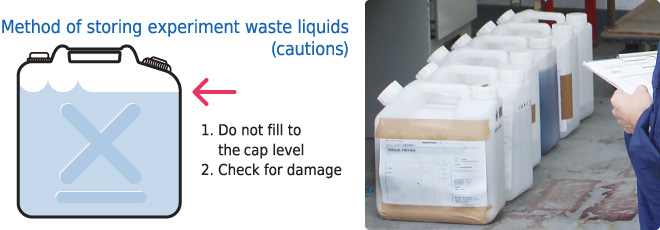
Polyethylene container returns
A new polyethylene container will be provided by the Environmental Safety Center after the experiment waste liquids are discharged.
Status of collection of experiment waste liquids
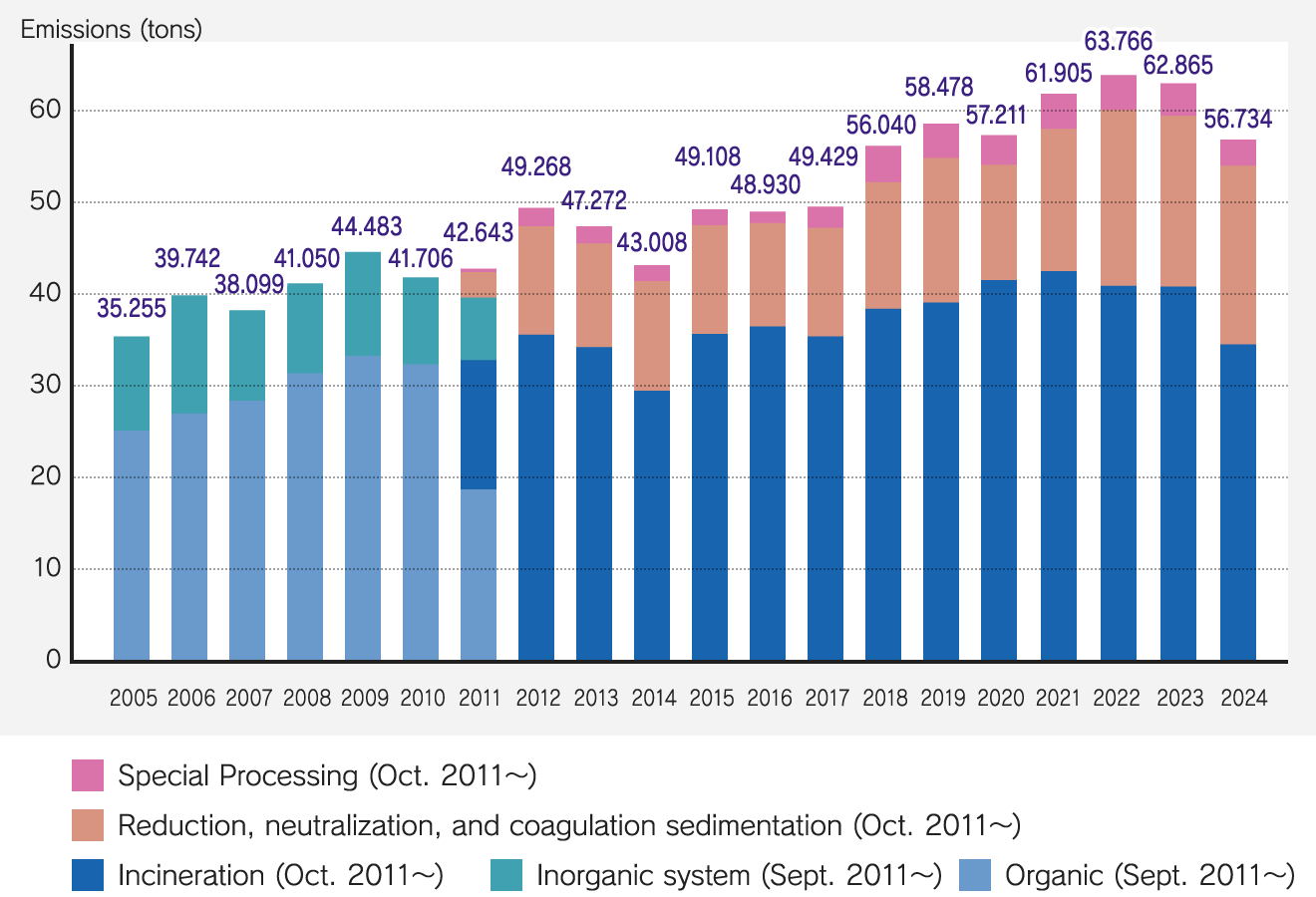
Collection of unnecessary chemicals
Collection flow for unnecessary chemicals
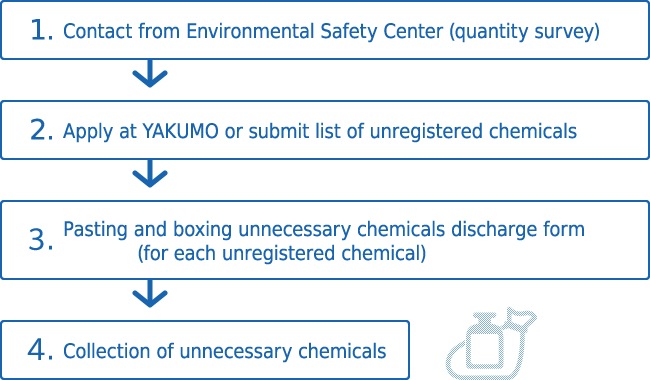
Costs for disposal of unnecessary chemicals
The Environmental Safety Center will bear the cost.
However, if the amount exceeds the budget, it will be borne by the
beneficiaries.
Frequency of unnecessary chemicals collection
Collected twice a year. However, those who have retired and those who have been transferred will also be collected at the end of the fiscal year.
Classification of unnecessary chemicals
| Classification | Contents | Note |
|---|---|---|
| Toxic heavy metal liquids | Chemicals containing mercury, chromium, arsenic, selenium, lead, or cadmium | Specified hazardous waste |
| Toxic heavy metal solids | ||
| Cyan liquids / toxic solvents | Chemicals containing cyanides, trichloroethylene, tetrachloroethylene, dichloromethane, carbon tetrachloride, 1,2-dichloroethane, 1,1-dichloroethylene, cis-1,2-dichloroethylene, 1,1,1-trichloroethane, 1,1,2-trichloroethane, 1,3-dichloropropene, benzene, or 1,4-dioxane | |
| Cyan solids | Solid chemicals containing cyanides | |
| Valuable metals | Chemicals containing gold, platinum, silver, or palladium | |
| General liquids | Chemicals whose content can be identified (other than above and “Other”) | |
| General solids | ||
| Unidentified liquids | Chemicals whose content cannot be identified | |
| Unidentified solids | ||
| Other | Organophosphorus compounds (limited to parathion, methyl parathion, methyl dimetone, and EPN), simazine, thiuram, and thiobencarb | Specified hazardous waste |
| Spontaneously combustible substances and water-reactive substances (metallic potassium, metallic sodium, alkyl aluminum, yellow phosphorus, and Type 3 hazardous materials), and spray chemicals (High pressure gas cylinders are not included in chemicals.) , Toxic sludge |
- Items outside the scope of disposal
-
- Internationally controlled materials
- Stimulants/raw materials that can produce stimulants
- Narcotics
- Radioactive substances
- Medical waste/infectious waste
- Asbestos-containing substances
- PCB-containing substances, dioxins
- Experiment waste liquids (discharged during waste liquid collection on campus)
Collection of unnecessary chemicals
Please apply for disposal of unnecessary chemicals through YAKUMO.
For chemicals that are not registered in YAKUMO (e.g., those outside the scope
of registration, synthetic products, and subcontracted products), please make a
list and attach an unnecessary chemicals discharge form to each bottle based on
the listed number.
- Precautions
-
- Put unnecessary chemicals in sealable containers. (In principle, polyethylene bags must not be used. Be sure to consider the reactivity of the chemicals when selecting the container material.)
- Seal the cap of chemical containers carefully. (If liquid leakage or odors are present, replace the cap or transfer the chemicals to a different container.)
- Place the chemical containers upright in a cardboard box. (Do not lay the containers on their side or stack them.)
- If there is extra space after the chemical containers have been added, put cushioning materials or crumpled newspaper, etc., to prevent the containers from falling.
- Wrap each glass bottle with a cushioning material or a sheet of paper, or use cardboard box partitions. (Prevent bottle breakage due to contact with each other.)
- Chemicals should be sealed tightly to prevent leakage. (For corked bottles made from frosted glass, use sealing tape, parafilm, etc., to prevent the cork from loosening.)
- Drain off as much water as possible from the toxic sludge, put the sludge in a bag or container to prevent it from leaking or scattering, and label it with the name of the substance it contains (especially heavy metals) before discharging it.
- Chemicals should be placed in a separate box for each chemical handling group, and a list of unnecessary chemicals should be attached to each box.
- If the application was submitted using YAKUMO, make sure that the YAKUMO barcode is attached.
- Please check beforehand to ensure that you are not discharging anything other than what was listed in the application.
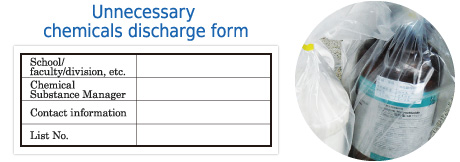
Collection of unnecessary chemicals
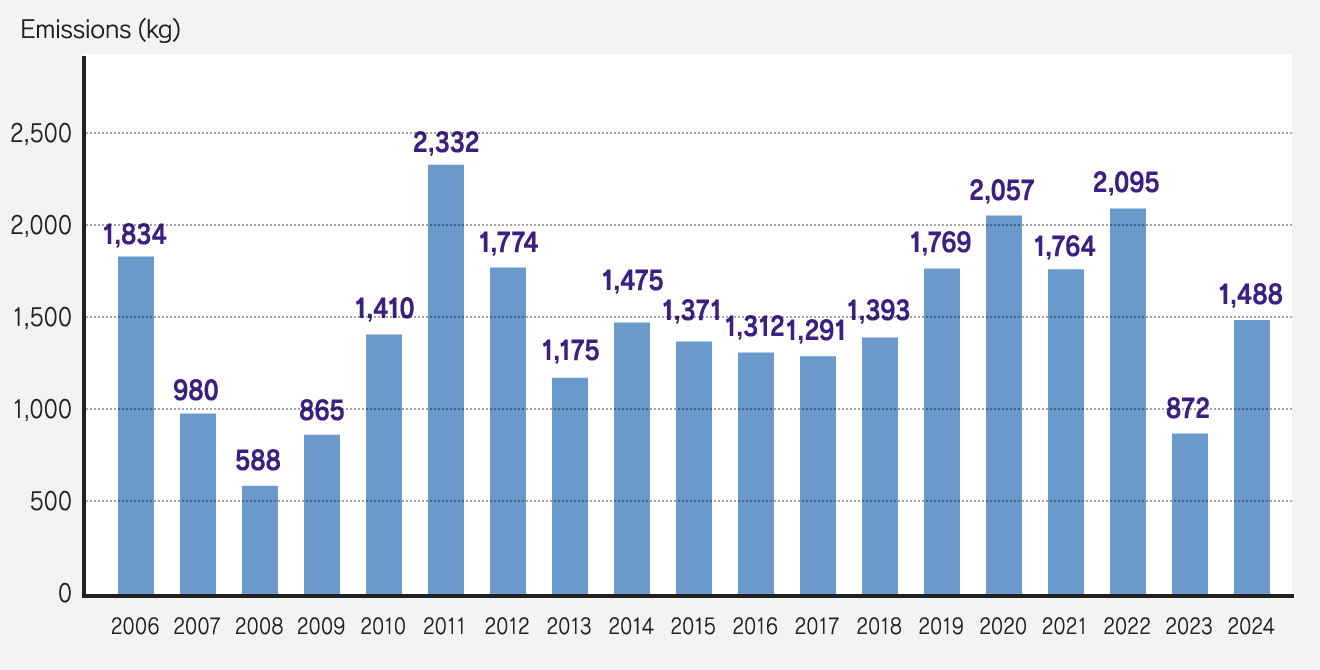
Collection of mercury-containing apparatuses
Mercury-containing apparatuses
The university discharges both mercury-based waste liquids and waste to which
mercury is adhered.
Due to the toxicity of mercury, the Environmental Safety Center collects all
such waste, and disposal is performed by a specialized contractor once a year.
Status of collection of equipment containing mercury
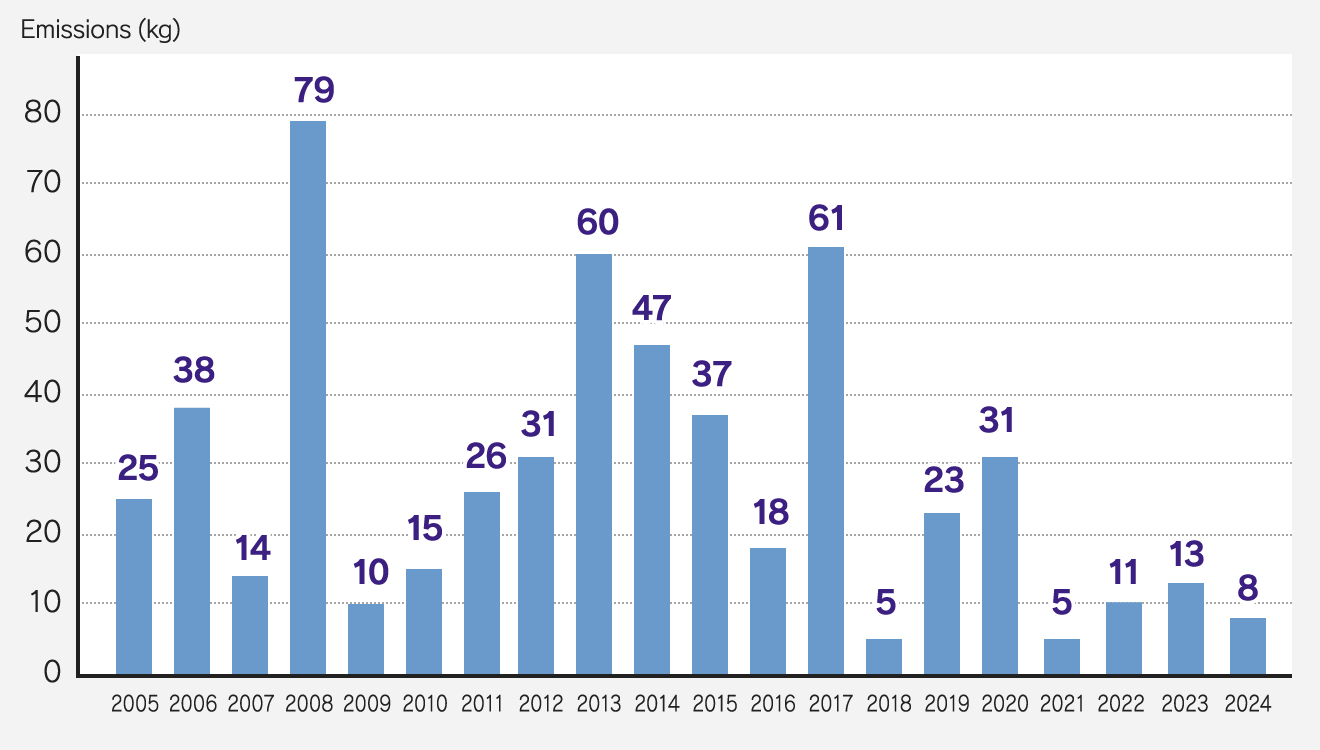
Collection of experiment waste
Experiment waste
In the course of normal activities (education, research, and medical care), the university generates waste that is not produced by normal life activities. This type of waste is called industrial waste. At Kumamoto University, waste produced from experiments (including unused substances) is referred to as experiment waste. More specifically, anything used in an experiment and no longer needed is equivalent to experiment waste. For example, when a container of chemicals is emptied, it must be disposed of as experiment waste.
Handling of experiment waste at Kumamoto University (Decision by the Facilities and Environmental Committee, May 28, 2012)
- Storage method
-
- Experiment waste (waste directly used in experiments, including unused materials that fall under the attached table) must be separated from general waste and handled as industrial waste.
- Experiment waste should not be placed in collection points for general waste (hereinafter referred to as "waste collection points"), but must be stored in each department. (Signs forbidding disposal of experiment waste shall be posted at each waste collection point.)
- If experiment waste is found at a waste collection point, it should be disposed of by the department that uses that collection point.
- Processing method
- Experiment waste disposed of as industrial waste should be rendered harmless by incineration.
- Budget
- Disposal costs shall be borne by the beneficiary (department, division, chemical substance handling group, etc.).
- Other
- Effective from July 1, 2012.
| Separation of industrial waste | Type (Proposed by the Environmental Safety Center) |
Concrete example |
|---|---|---|
| Waste plastics Hazardous sludge Infectious waste etc. |
Experiment-related combustibles | Disposable plastics (e.g., pipette tips, pipettes), gels (ethidium bromide-containing gels shall be considered non-infectious waste), paper (e.g., filter paper, medicine wrapping paper), gloves, aluminum foil, etc. |
| Glass waste, ceramic waste, etc. |
Experimental incombustibles | Beakers, pipettes, sample bottles, chemical bottles with a capacity of less than 500 mL, crucibles, etc. |
| Waste chemical bottles | 500 mL to 3 L chemical bottles that contained chemicals | |
| Metal scraps
etc. |
Experimental incombustibles | Metallic spatula (hypodermic needles shall be considered non-infectious waste) etc. |
| Waste chemical cans | 18 liter drums, small drums, etc. that contained chemicals |
-
How to separate and dispose of laboratory waste (Kurokami, Oe)
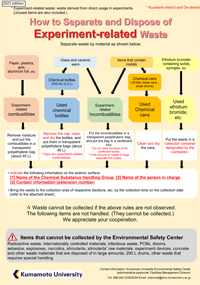
-
How to separate and dispose of laboratory waste (Honjo)
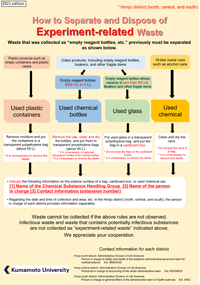
-
Methods of discharging non-infectious waste (Kurokmai, Oe)
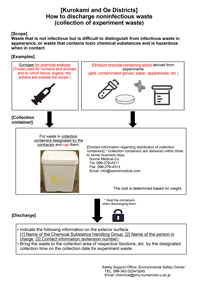
Experiment waste
In the course of normal activities (education, research, and medical care), the university generates waste that is not produced by normal life activities. This type of waste is called industrial waste. At Kumamoto University, waste produced from experiments (including unused substances) is referred to as experiment waste. More specifically, anything used in an experiment and no longer needed is equivalent to experiment waste. For example, when a container of chemicals is emptied, it must be disposed of as experiment waste.
Separation and storage of laboratory waste (for collection by the Environmental Safety Center)
- In compliance with the guideline "How to separate and dispose of experiment waste," separate and store the waste into five categories: combustible experiment waste, non-combustible experiment waste, waste chemical bottles, waste chemical cans, and non-infectious waste.
- Before storing waste, wash and drain them as much as possible to prevent abnormal odors.
- Chemicals that are not suitable for washing with water, such as
water-resistant chemicals, should be appropriately cleaned with a safe
washable material.
Empty chemical bottles that are difficult to clean should be disposed of as unneeded chemicals. Store the wash liquids of at least three washes as experiment liquid waste. - If there is a possibility that the disposal bag will be punctured by a pipette tip, etc., take measures such as doubling the bag.
- Store waste in your group area until collection day (do not leave it outside).
Status of collection of Experiment waste (for collection at the Environmental Safety Center)
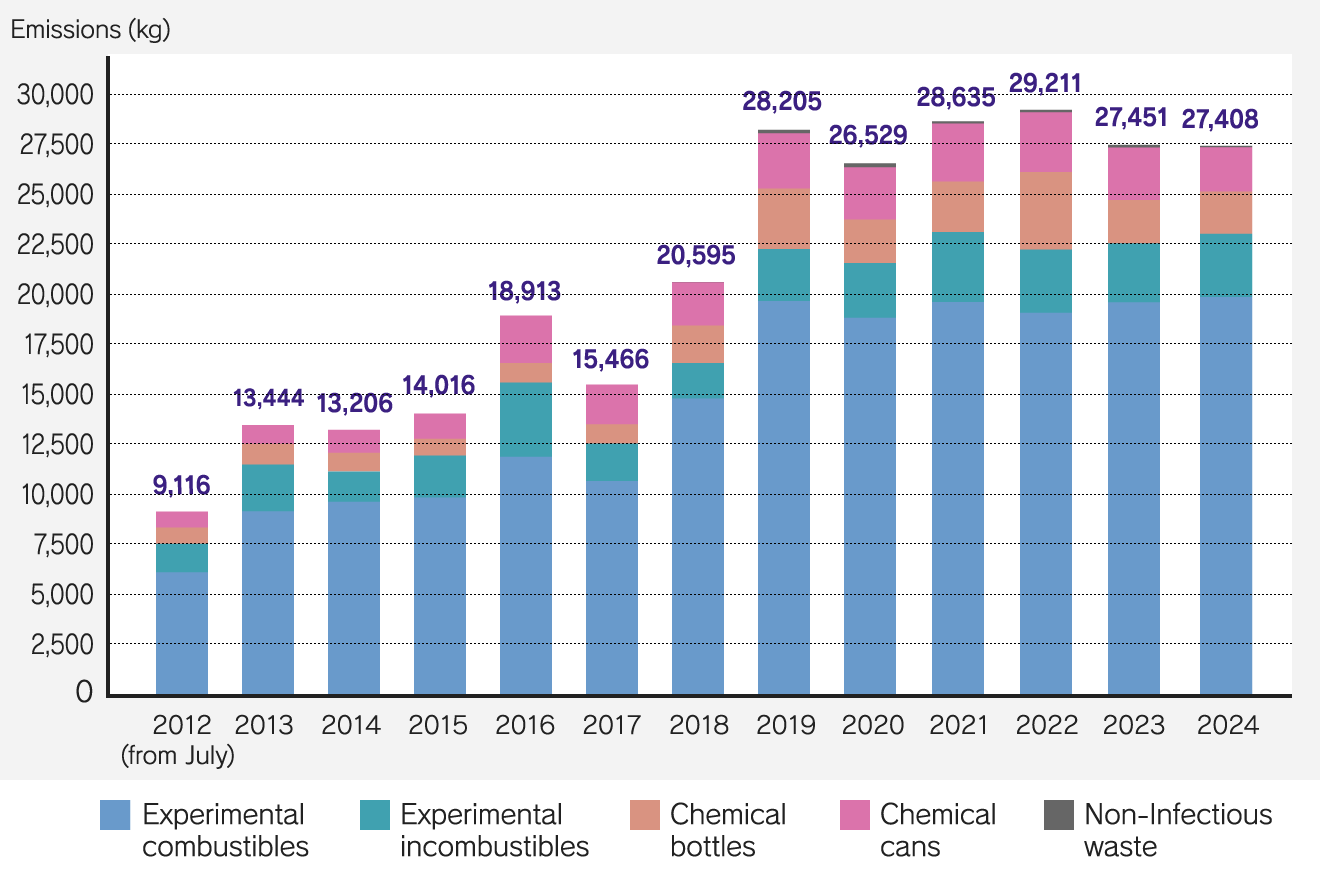
Honjo and Ohe Districts and non-infectious waste added from October, 2008.













